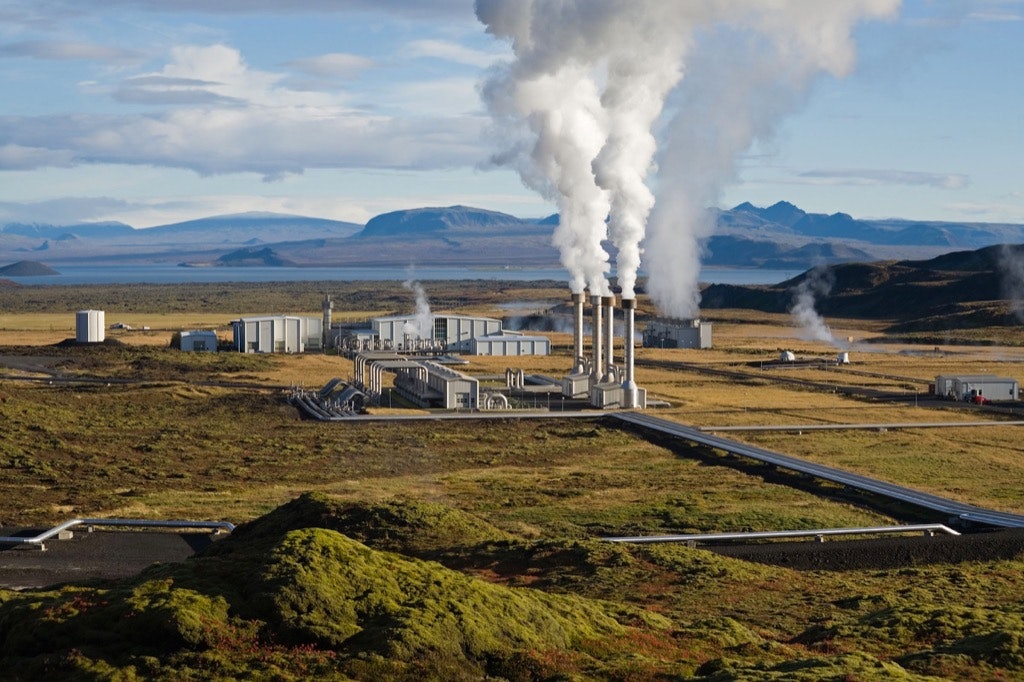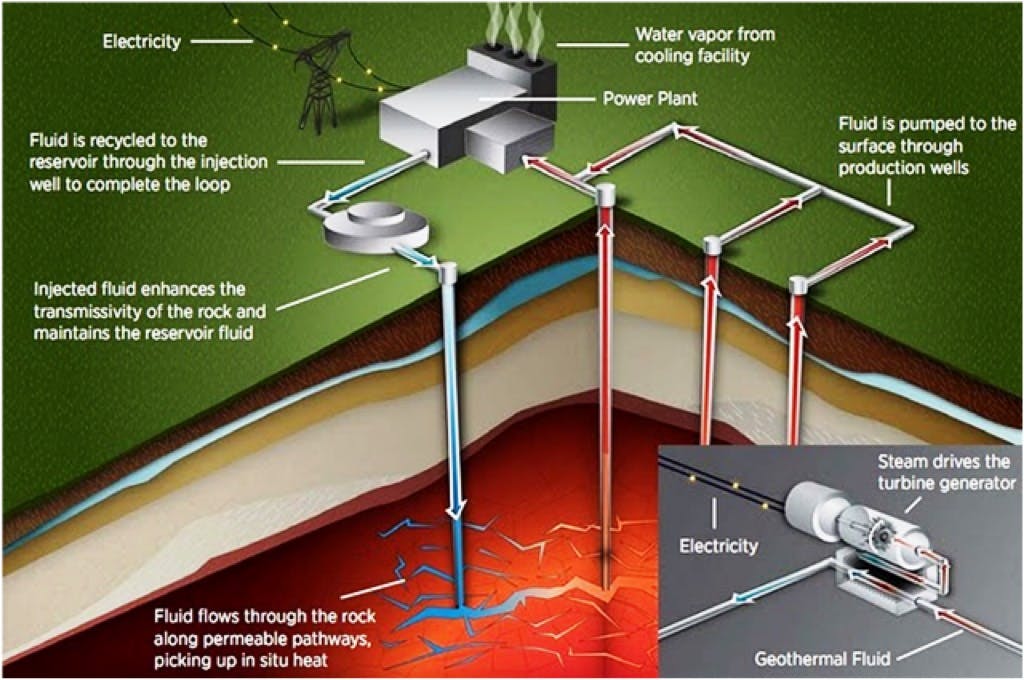16 Key Facts About Geothermal Power Plants

Geothermal power plants can provide clean and affordable energy by capturing hot water from deep within the earth. Using this geothermal energy for heating, cooking, or making electricity has its challenges. Only a few locations are ideal. But, where it is available, people have used geothermal energy for cooking and heating for thousands of years. When electrical generators and distribution equipment hit the market in the 19th century, entrepreneurs started building geothermal plants to generate electricity. This post summarizes 15 need-to-know facts about this source of renewable energy. A site called Our Energy in particular shares many facts about where geothermal energy is popular and how much of it different countries use.
Lots of Countries Use Geothermal Sources for Electricity
Power plants are most common in the Philippines and Iceland. The United States, Costa Rica, Lithuania, China, Japan, Mexico, France, Italy, Nicaragua, Russia, and Indonesia use geothermal power for heating, for generating electricity, or both. At least 70 countries use at least some geothermal energy for heating.
Most of the Generating Capacity is Outside the USA
Iceland and the Philippines lead the world in geothermal energy use, according to National Geographic magazine. They get about 30% of their power from geothermal sources, compared with approximately 1% in the USA.
Geothermal Power is Old
People have used the natural heat from geothermal power sources for cooking and heating for thousands of years. The earliest use of geothermal power was in spas, where the energy created hot springs. This recreational use of geothermal energy sources is also thousands of years old.
Italy Led the Way in Geothermal Electrical Power
While there may have been earlier experiments in generating power from a geothermal vent, the first practical application was demonstrated in Larderello, Italy in 1904. This location is still home to the second largest geothermal power plant in the world.
There are Four Types of Geothermal Power Plants
Dry steam facilities use steam vented from the ground to drive turbines that generate electricity. Binary power plants use cooler steam to heat a volatile fluid like butane, which vaporizes and spins a turbine. Flash steam pumps hot water into areas of relatively low pressure where it becomes steam. Enhanced geothermal systems create fractures in hot rock so that hot water can flow to the drill site and be extracted to produce electricity. Many binary cycle power plants operate around the world, including at Mammoth Lakes, California and Steamboat Springs, Colorado.
Geothermal Power is Clean
Geothermal power plants are quite expensive to build, but the electricity generated is less expensive and contributes much less to global warming and general air pollution than natural gas production. There can be a small risk of releasing arsenic compounds and gases like methane, but the emissions from a typical geothermal plant are tiny compared with fossil fuel plants.
The Largest Geothermal Plant is in the USA
The largest geothermal power project in the world is the Geysers project in the United States, north of San Francisco, CA. The project site is now home to 22 geothermal stations with 350 wells. The complex has a maximum output of 1,517 megawatts but, usually, produces just under 1,000 megawatts. Several companies operate plants at the Geysers.
Geothermal Heating Saves Money
According to Planet Save, geothermal heat pumps can save 70% on heating bills and 40% on cooling bills. These facts probably help to explain why American homeowners buy over 60,000 geothermal heat pumps a year.
Geothermal Energy Generation in the United States
In the Western United States, there are at least 2,850 megawatts of geothermal energy generated. In Utah, geothermal energy generates 2% of electricity. Six percent of California’s power comes from geothermal energy.
Geothermal’s Growth Potential is Huge
In the United States, exploitation of geothermal energy has hardly begun, in spite of the numbers reported above. A recent report from Renewable Energy World suggests that the installed capacity could reach 100,000 megawatts by 2062. By way of comparison, that is about as much electricity as France uses today.
The Affordability of Geothermal Power is Uncertain
Geothermal power is cost competitive now. Generating electricity from a geothermal heat source costs from 4.5 to 7.3 cents per kilowatt hour, which is comparable to what power from a new fossil fuel plant would cost. However, according to the Renewable Energy World report mentioned above, geothermal electricity generation is not quite competitive with wind and solar.

District Heating is Old News in the USA
District heating is, as the name implies, a heating system that uses natural steam to heat homes and businesses near the heat source. District heating systems in the United States probably heat hundreds of neighborhoods, office blocks, and manufacturing facilities. The oldest district heating system using geothermal power went into operation in Utah, in 1892. It still heats 450 homes.
Geothermal Electricity in the USA isn’t New
Geothermal power stations are new, compared with coal and gas power plants. However, homes and businesses in the United States have been running on power from geothermal vents since the 1960s. Pacific Gas and Electric built the nation’s first geothermal power plant at the Geysers field north of San Francisco in 1960.
California and Nevada Lead in Geothermal Energy Production
According to February 2013 statistics published on Wikipedia, California produces far more electricity this way than any other state with 80.7% of the nation’s geothermal electricity output. Nevada is second with 15.3% of the nation’s current capacity. Many other states have some production, but no other state accounts for more than 1.4% of the nation’s overall production.
Geothermal Power Plants are Compact
A power plant that can generate 1 gigawatt (1,000 megawatts) per hour of electricity would take up a good deal of space. A geothermal power plant that size would take up 404 square miles of land, according to National Geographic. A wind farm would need 1,335 square miles, and a solar photovoltaic plant would need 3,237 square miles.
Geothermal Energy is Great for Baseload Power
Unlike wind and solar farms, a geothermal plant can make electricity 24 hours a day, seven days a week. This makes geothermal power a viable and renewable source of baseload power. Wind is a poor choice for this kind of power because it is unpredictable, and solar obviously isn’t suitable because the sun goes down.
